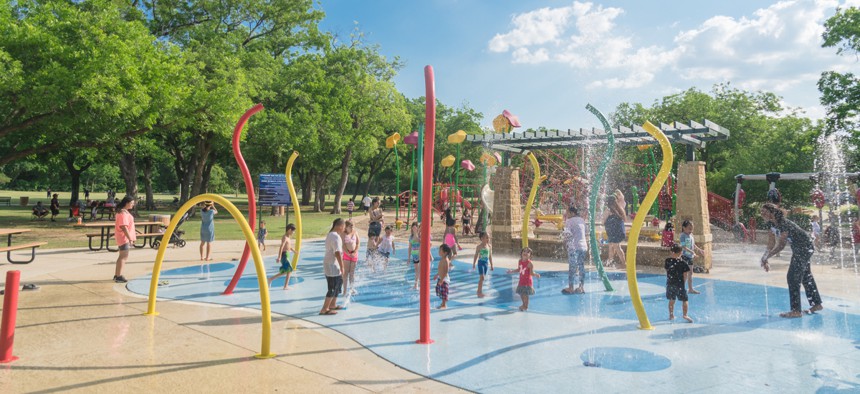Kids Aren't Getting Much Exercise

National guidelines recommend that kids participate in 60 minutes of physical activity per day. Shutterstock

Connecting state and local government leaders
Children in some states scored better than others in engaging in physical activities, a report finds. National guidelines recommend kids engage in active play or exercise at least an hour a day.
More than three-fourths of children nationally between the ages of 6 and 17 do not get enough daily physical activity, and activity levels vary depending on gender and other factors, according to a recent national report card.
The 2018 United States Report Card on Physical Activity for Children and Youth, released this month, provides a comprehensive assessment of activity levels by reviewing and summarizing national health statistics and data from multiple national surveys. Metrics are broken into nine indicators, including overall physical activity, health-related fitness and sedentary behaviors like watching television or playing video games. Each metric is given a letter grade, from A to F.
The report, released by a subcommittee of the nonprofit coalition National Physical Activity Plan, aims to assess overall levels of physical activity among minors but also to serve as an advocacy tool to help parents and policy makers “implement new initiatives, programs, and policies in support of healthy environments to improve the physical activity levels and health of our children and youth.”
The report card, the third since 2014, paints a somewhat bleak picture of youth physical activity in the United States. None of the nine metrics scored higher than a C (which was for community and built environment), while the overall physical activity grade for children and youth was a D minus.
Specifically, the report card says, 76 percent of children between the ages of 6 and 17 are failing to meet the national physical activity guidelines for their age group. Approved in 2008, those guidelines recommend a minimum of 60 minutes of physical activity every day.
States that fared particularly poorly in overall physical activity include Arkansas, Maryland, Louisiana and Hawaii, along with Washington D.C. By contrast, higher-than-average numbers of children and youth in Kansas, Nebraska, California, North Dakota and New Mexico are active at least five days per week.
Nationally, activity levels vary within the age group. For example, roughly 35 percent of high-school boys report participating in at least 60 minutes of daily physical activity, compared to just 18 percent of girls. Children between the ages of 6 and 11 participate in roughly 88 minutes of exercise, compared to 33 minutes for adolescents between the ages of 12 and 15 and 26 minutes for teens aged 16 to 19.
Physical environment also has an impact. Children living in neighborhoods with high rates of crime and limited access to parks are generally more sedentary. Intervention programs can help, but their effects vary depending on location. For example, children living in low-crime neighborhoods “significantly increased their physical activity by more than 5,000 steps per day” when receiving prompts via cell phone, but kids in high-crime neighborhoods saw an increase of only 1,000 steps per day when enrolled in the same program.
That means that programs that help kids become more active may not have the same impact on all children. “Programs may be less effective for some children than others— which means giving all children the same activity programs may actually increase the physical activity gap," the report says.
To increase overall physical activity, the report card recommends a host of actions, including improving understanding of racial and ethnic differences in activity levels, including children and youth with disabilities in national surveys and developing “surveys that have physical activity questions that are culturally relevant.”
There are also bright spots, the report notes. Roughly 75 percent of children live in a neighborhood with sidewalks and access to parks, and more than half of kids and high-school students have participated in a team sport within the past year. But the overall low scores should serve as a wake-up call, according to Russell Pate, board chair for the National Physical Activity Plan Alliance.
“While these positive results are encouraging and provide a glimpse into what’s possible, there is no denying that the overall grades for the indicators remain critically low,” Pate said in a statement. “This report card should generate a renewed sense of urgency to take the action needed for the sake of our children and their future.”
Kate Elizabeth Queram is a Staff Correspondent for Government Executive’s Route Fifty and is based in Washington, D.C.

NEXT STORY: More U.S. Women Dying From Childbirth. How One State Bucks the Trend.




